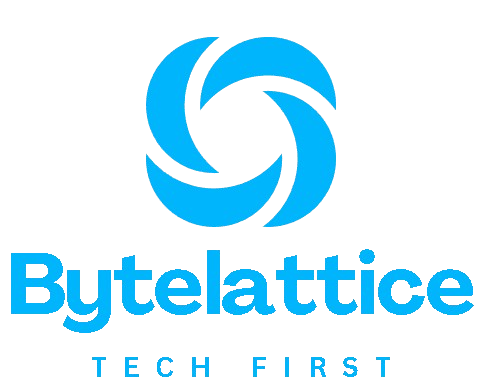
What are the Top Mobile App Marketing Strategies?
The mobile app landscape is evolving at an unprecedented rate. In 2025, standing out will require a blend of tried-and-true tactics and cutting-edge innovations. From optimizing your app store presence to integrating AI and AR, this article covers the strategies that will drive downloads, engagement, and revenue. You’ll discover how to refine your ASO, partner with influencers of all sizes, leverage gamification, and harness data for more intelligent decisions.
The Importance of App Store Optimization (ASO)
App Store Optimization remains the bedrock of organic growth. More than half of all app installs come from store searches, so ranking high is non-negotiable. A strong ASO strategy ensures your app appears for relevant keywords and entices users to click through.
Advanced ASO Tactics for Organic Growth
Traditional ASO focuses on keyword fields and descriptions. In 2025, you’ll need to enhance this with competitive analysis tools and A/B testing of creative assets. Track performance by regional market, tweak metadata based on user behavior, and experiment with long-tail phrases that capture niche intent. Remember to refresh your keywords regularly to reflect emerging terms and seasonal trends rather than set them once.
Visual Asset Optimization for Enhanced Discovery

Your app icon and preview videos are your first impression. Small changes—such as tweaking contrast or resizing elements—can significantly boost tap-through rates. Test multiple icon versions in select markets and analyze which design resonates most effectively. With video previews, focus on the core value in the first five seconds. Humanize the experience by showcasing real-life scenarios where your app solves a problem.
Exploring Alternative App Stores for Wider Reach
Google Play and Apple’s App Store dominate, but alternative stores can unlock new audiences. Regions like Southeast Asia and Africa host local app marketplaces that cater to specific devices. Research device usage data in target markets, then distribute your APK or IPA through these channels. Partnerships with local telecom providers can also bundle your app for first-time users, driving adoption in under-penetrated regions.
Crafting a Robust User Acquisition Strategy
Paid acquisition remains vital, but the playbook has shifted. Beyond ad networks, focus on referral incentives, performance partnerships, and exclusive launch events. Allocate the budget according to each channel’s ROI rather than equal splits. Test new platforms, such as in-app podcast ads or interactive social media formats. When you ask, “Have you tried our app yet?” in messaging, you’re more likely to spark curiosity, so experiment with push notifications that invite rather than interrupt.
Leveraging Micro- and Nano-Influencers for Effective Campaigns
Macro-influencers command large audiences, but micro- and nano-influencers drive authentic engagement at a lower cost. In 2025, partner with creators who match your app’s niche. Please provide them with unique promo codes or early access, and then let them share genuine stories. Their smaller, highly engaged communities often convert better than massive followings. Track campaign performance via UTM links and align incentives with actual installs or subscriptions.
Implementing User Retention Strategies through Gamification
Acquiring users is expensive; keeping them active is a cost-effective approach. Game mechanics—like daily streaks, leaderboards, and badges—tap into intrinsic motivation. Design challenges that align with your app’s core functionality. If you run a fitness app, unlock new workout routines after five consecutive days. Social features, such as sharing achievements with friends, further cement habits and turn users into advocates.
Personalization as a Key to Sustaining Engagement
Generic messaging falls flat. Use in-app behavior data to tailor content, offers, and notifications. AI-driven segmentation can group users based on their usage patterns and then deliver personalized onboarding flows or push notifications. For instance, a travel app might suggest weekend getaways to users who recently viewed hotel listings. Question: What personalized touch could make your users feel heard today?
Enhancing Customer Service for Improved User Satisfaction
In-app support matters. Embed chatbots powered by conversational AI to answer FAQs instantly. When complexity arises, route conversations to human agents with full context. A seamless handoff reduces frustration and churn. Live chat options, integrated seamlessly within the app, can increase satisfaction scores by up to 50 percent.
Integrating Augmented Reality (AR) for Immersive Experiences

AR moves beyond gimmicks. In 2025, practical AR features—like virtual try-ons or spatial navigation—will drive downloads. Retail apps can enable users to place furniture in their homes, reducing purchase hesitation virtually. Tourism apps can overlay historical facts onto landmarks. Invest in lightweight AR SDKs to ensure smooth performance, then showcase the feature in your app preview video to boost discovery.
Utilizing Artificial Intelligence (AI) for Personalized Interactions
AI recommendation engines can analyze user preferences and surface relevant content or features that align with their interests. Music apps that learn your favorite genres retain subscribers. News apps that curate articles based on users’ reading histories see higher daily session rates. Onboarding AI chat assistants can guide new users through complex features, improving first-week retention.
Conversational AI: Revolutionizing User Communication
Chatbots have matured into true conversational agents. Integrate virtual assistants that understand context and sentiment. E-commerce apps can handle order tracking, returns, and product recommendations entirely through chat. Conversational AI reduces the barrier to action by allowing users to use natural language queries instead of navigating menus.
Embracing Social Commerce in App Marketing
Social media platforms are adding native checkout experiences. Integrate deep links from shoppable posts directly into your app store listing or app content, and host live shopping events within your app or via partner platforms like Instagram Reels. When users can make purchases without leaving the social platform, conversion rates increase.
The Power of Authentic User-Generated Content
Nothing beats social proof. Encourage users to share screenshots, reviews, or creative ways they use your app. Feature the best contributions in your app’s social channels or in-app feeds. Highlighting real stories builds credibility and incentivizes more users to share. Interactive campaigns, such as photo contests, can amplify reach organically.
Innovative In-Game Marketing Tactics
For gaming apps, traditional ads interrupt the flow. Instead, embed branded challenges or sponsored items within gameplay. Collaborate with advertisers to create themed levels that feel native. Offer cosmetic items or power-ups co-branded with partner brands. Players appreciate non-intrusive experiences that enhance rather than break immersion.
Developing a Comprehensive Analytics Framework
Data drives decisions. Build a dashboard that unifies install, engagement, and revenue metrics from all channels. Include attribution data from every campaign, then analyze lifetime value by source. Implement custom events to track micro-conversions and funnel drop-offs. Accurate insights are gained by correlating behavioral data with campaign spending.
Using Data to Optimize Marketing Strategies
Let data guide your next move. Identify underperforming channels and reallocate budgets in real-time. A/B test landing pages, creative assets, and messaging. Use predictive analytics to forecast user churn and trigger reactivation campaigns before users drop off. Continuous optimization is the only way to stay ahead of the competition.
Staying Ahead in a Dynamic Mobile App Ecosystem
The only constant is change. Monitor emerging platforms, privacy regulations, and user expectations. Regularly audit your app for performance and UX issues. Attend industry events and subscribe to thought-leader newsletters. Ask yourself: What trend might disrupt my strategy tomorrow?
Conclusion
Mobile app marketing in 2025 demands agility, creativity, and data-driven decision-making. By mastering ASO, partnering with the right influencers, integrating AI and AR into your experience, and prioritizing user satisfaction, you’ll develop a strategy that not only attracts users but also keeps them coming back. Ready to level up? Start implementing these tactics today and watch your app thrive.
FAQs
Q1: What is ASO, and why is it crucial for app growth?
App Store Optimization (ASO) is the process of improving app visibility in app stores. Higher rankings lead to more organic installs, making ASO essential for sustainable growth.
Q2: How do micro-influencers differ from macro-influencers?
Micro-influencers have smaller, niche audiences with higher engagement rates. Their authentic recommendations often translate into better conversions at lower costs than those of macro-influencers.
Q3: Can AR features boost downloads?
Yes. AR showcases innovative app capabilities and solves tangible problems—such as virtual try-ons—which pique user interest and drive installs.
Q4: How should I measure the success of my app marketing campaigns?
Track key metrics such as CPI (cost per install), LTV (lifetime value), retention rate, and ROI. Use an analytics framework that combines attribution and user behavior data for clear insights.
Q5: What role does AI play in user retention?
AI analyzes user patterns to deliver personalized content, push notifications, and in-app offers. This tailored approach increases engagement and reduces churn.
